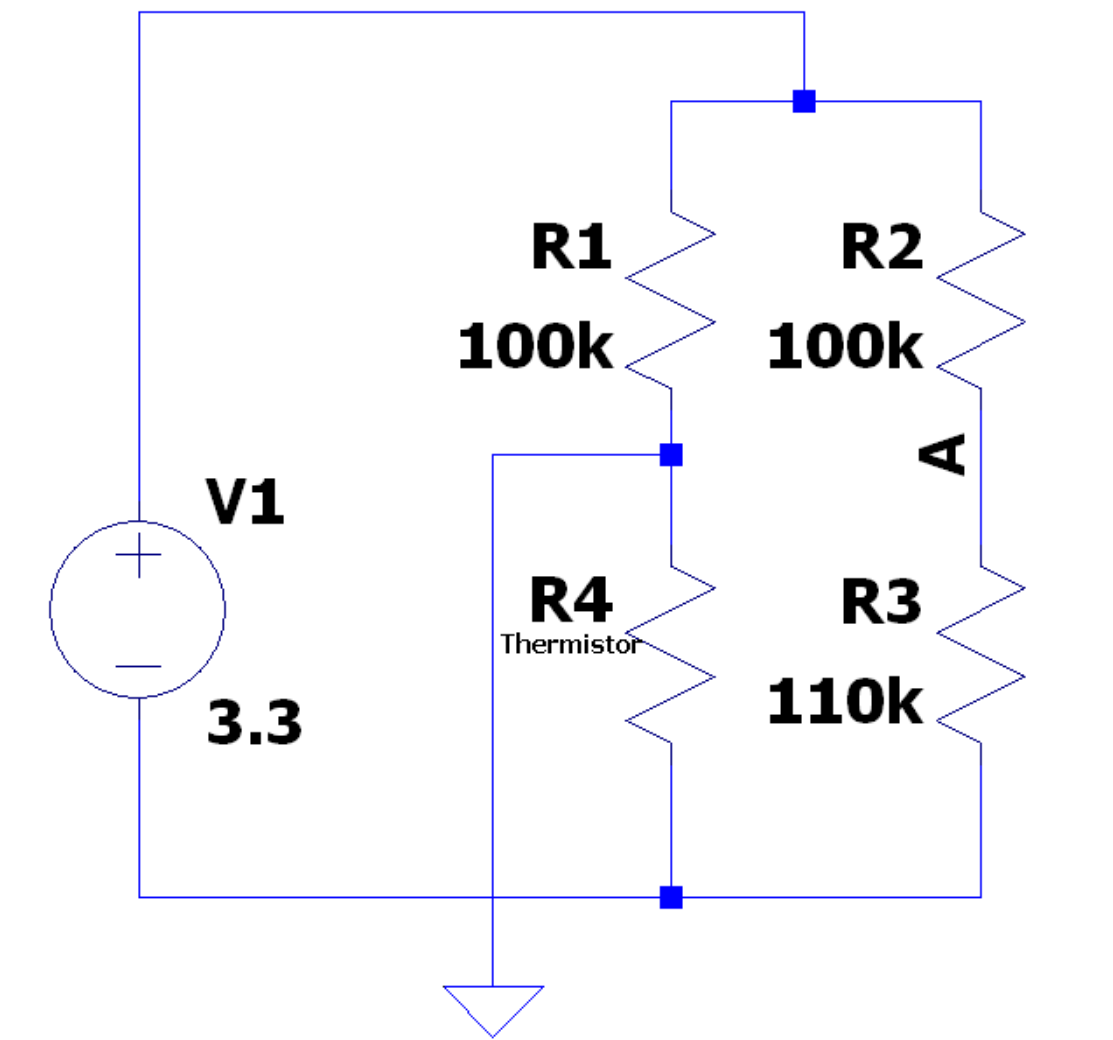| Version 37 (modified by , 17 months ago) ( diff ) |
|---|
Plant Doctor: Harnessing Backscatter Radio Sensors for Agriculture
WINLAB Summer Internship 2024
Group Members: Sam-Fone Cheung, Shriya Das, Aly Mustafa, Xiang Meng
Advisor: Aggelos Bletsas
Project Objective
Modern agriculture requires wireless sensing networks to monitor environmental conditions such as temperature and soil moisture. However, traditional sensing networks are expensive and energy-intensive. Backscatter radio, or reflection radio, offers a low-cost and low-power alternative to conventional radio sensor networks (1). Despite the limited range, prior research using capacitance sensors to measure soil moisture has shown promising results (2).
Our group expanded this work to use temperature sensors or thermistors on plants which transmit information using backscatter techniques. These sensors will be battery-less and low-cost as they harvest ambient radio frequency (RF) energy.
Over the summer, our team split into two groups to build the transmitter and receiver, ultimately converging.
Weekly Progress
WEEK ONE
Receiver: Read prior art about backscatter radio (1), RFID tags, and capacitance sensors (2).
WEEK TWO
Receiver: Setup SDR# to use RTL-SDR's to explore software-defined radios (SDR) and tune into local FM stations. Also familiarized ourselves with GNURadio and its tutorials.
Transmitter: Learned how to use TI Launchpad MCU MSP-EXP430G2ET. Implemented an adjustable 200kHz-300kHz 50% duty cycle square wave output. Also implemented user input through digital input using the I/O pins. Attempted potentiometer user input, but we did not successfully complete it.
WEEK THREE
Progress: Continued using GNURadio to implement frequency shift keying (FSK) and periodograms (maximum likelihood estimators). We also used MATLAB/Octave to compare our results from GNURadio using the SDR.

WEEK FOUR
Receiver: Explored the accuracy of the receiver while changing the power transmission, frequency, and distance between the SDR and signal generator. Introduced about matched filters and how to implement them into the receiver (3). Despite a frequency measurement error, we implemented logging into GNURadio using a file sink.
Transmitter: Using the TI Launchpad Microcontroller we were able to implement FSK. also created a block diagram to illustrate how both the transmitter and receiver should work together to send information about a plant's temperature.
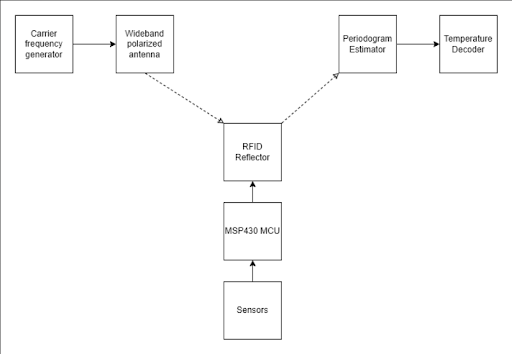
WEEK FIVE
Progress: This week, we received three different kinds of thermistors. We were able to implement a backscattered signal that encoded the information from the ADC (using a potentiometer). We are now investigating ways of measuring values from the thermistors, mainly considering a Wheatstone bridge.
We also worked on the receiver, changing from GNURadio to MATLAB. This has so far shown to work extremely well and much better than GNURadio. We can receive the backscattered signal. However, there are still some variances in the received signal we have to account for.
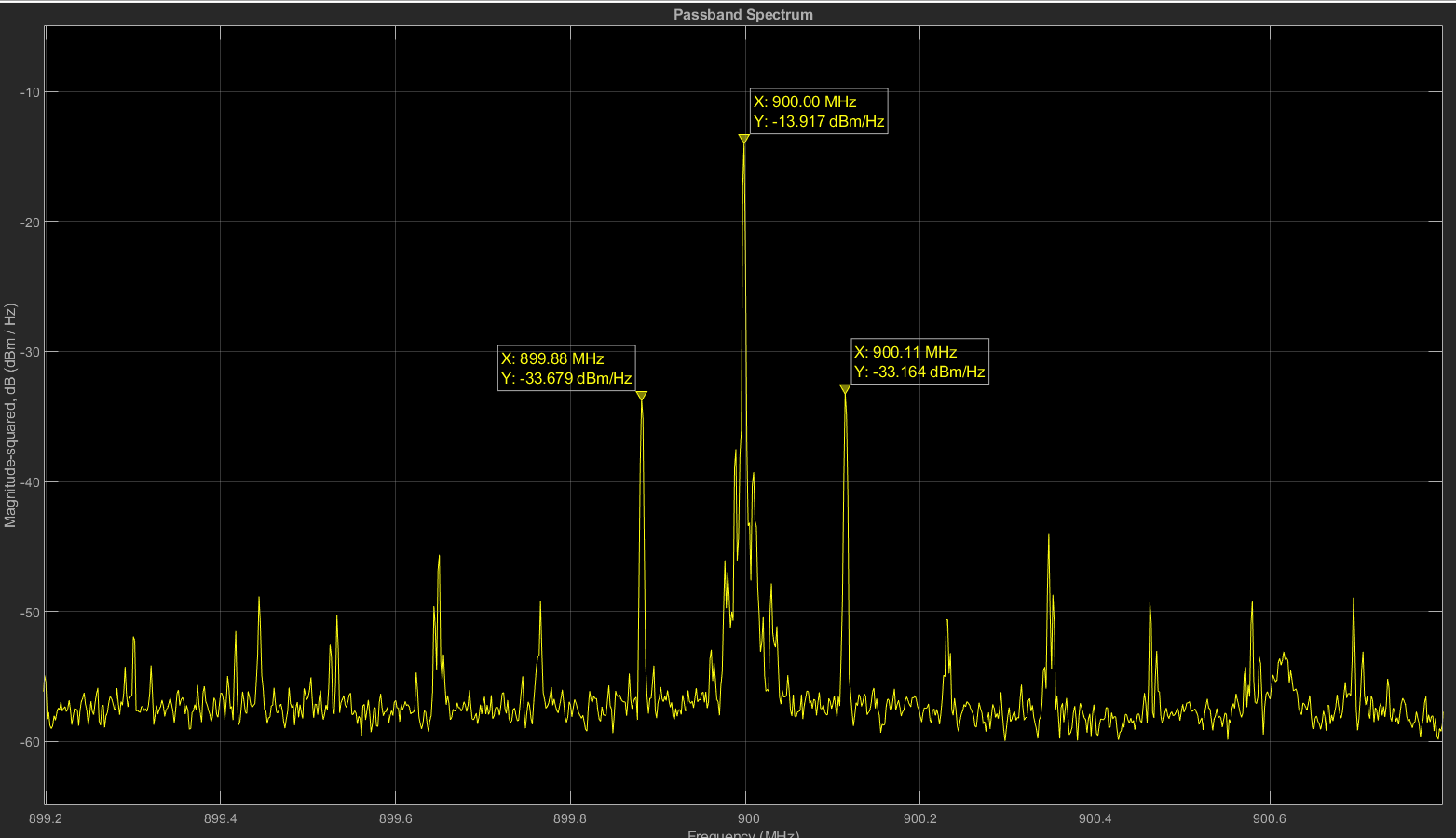
https://github.com/Autoraem/PlantDoctor Currently, this system is a periodogram estimator. This system first removes the DC offset (subtract the mean of the signal in each frame) then applies a FFT to the input signal with a Blackman-Harris windowing function. This returns a frequency spectrum. There will also be a CFO (carrier frequency offset) that will be removed by subtracting the max of the frequency spectrum and shifting all FFT values over. Afterwards, two separate bandpass filters are applied only allowing the region of interest (± 100kHz-200kHz) to show. Then we find peaks in this region which then becomes our estimate. To remove the effect from noise, we perform an averaging function.
We still need to do temperature interpolation and improve SNR and BER.
WEEK SIX
Progress: We moved the bench to on top of an antistatic mat. We also implemented twisted pair cables and an external DC power supply. All of these changes were made to get cleaner signals and avoid accidental antennas. We also made major progress on our work, being able to measure voltage across a Wheatstone bridge (see below) and encode it as a backscattered signal between 100kHz and 200kHz. We were also able to unite the transceiver-receiver system.
WEEK SEVEN
Progress: We fixed a small broken plexiglass chamber that we will use to store plants. Instead of breaking the entire panel, we chose to glue another sheet of plexiglass on top of it to prevent further cracking. This chamber will serve as a mockup for the remainder of the summer but the long-term goal is to build a large chamber with controls for humidity, temperature, and light.
We also did a live demo!
WEEK EIGHT
Weekly Presentation
Progress:
This week, we purchased a small Chinese Money Plant and several 26-gauge gold-plated steel needles. These needles will be used to measure the resistance of the plant. As shown below, two needles have been inserted through different stems which connect to the central stem system. We hope to measure a change in the plant's resistance as the soil moisture changes.
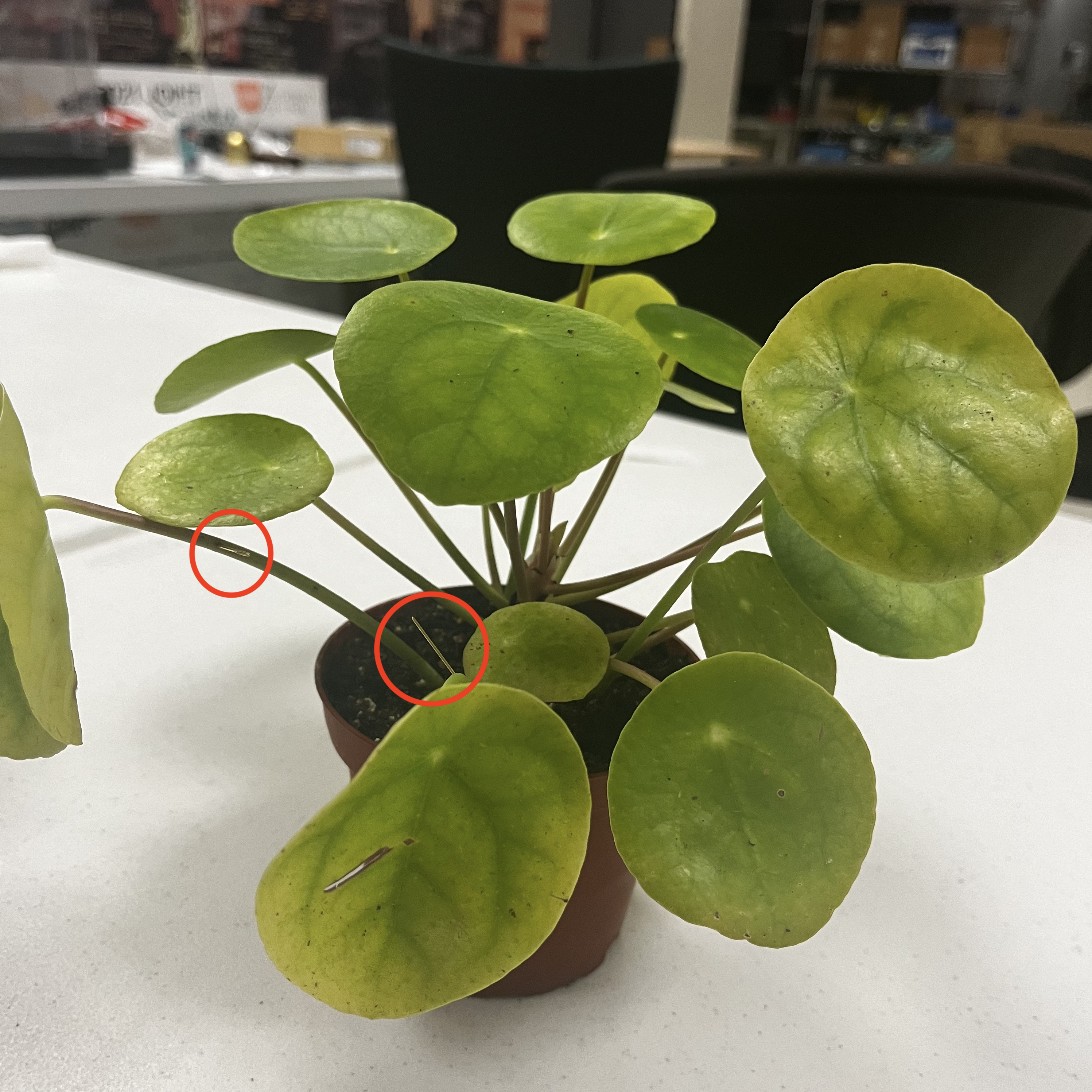
WEEK NINE
Weekly Presentation
Progress:
Digital sensors time
This week, we received basic controls for the plant chamber such as a temperature controller, LED grow lights, and humidity sensors. We still need to determine a method to control the humidity such as using a dehumidifier & humidifier or a saturated salt solution. Without these humidity controls, the excessive humidity within the ORBIT room led to growth of harmless fungi in the plant's soil.
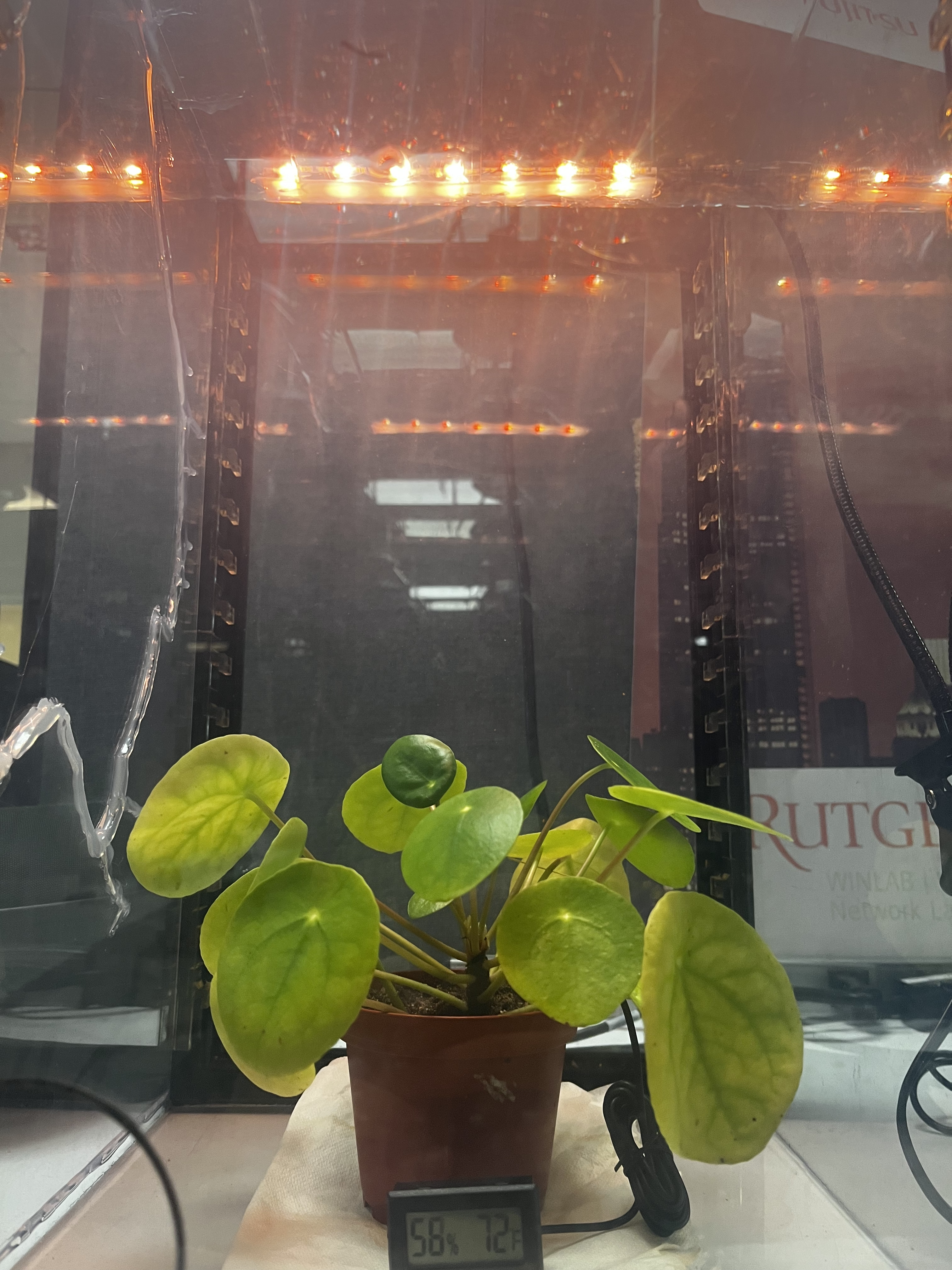
WEEK TEN
Final Presentation Progress:
References
(1) A. Bletsas, P. N. Alevizos and G. Vougioukas, "The Art of Signal Processing in Backscatter Radio for μW (or Less) Internet of Things: Intelligent Signal Processing and Backscatter Radio Enabling Batteryless Connectivity," in IEEE Signal Processing Magazine, vol. 35, no. 5, pp. 28-40, Sept. 2018, doi: 10.1109/MSP.2018.2837678.
(2) S. -N. Daskalakis, S. D. Assimonis, E. Kampianakis and A. Bletsas, "Soil Moisture Scatter Radio Networking With Low Power," in IEEE Transactions on Microwave Theory and Techniques, vol. 64, no. 7, pp. 2338-2346, July 2016, doi: 10.1109/TMTT.2016.2572677. keywords: {Wireless sensor networks;Loaded antennas;Frequency modulation;Radio frequency;Wireless communication;Monitoring;Scatter radio;sensor networks;soil moisture (SM)},
(3) J. Kimionis, A. Bletsas and J. N. Sahalos, "Increased Range Bistatic Scatter Radio," in IEEE Transactions on Communications, vol. 62, no. 3, pp. 1091-1104, March 2014, doi: 10.1109/TCOMM.2014.020314.130559. keywords: {Receivers;Modulation;Radiofrequency identification;Radio frequency;Wireless sensor networks;Bit error rate;Signal to noise ratio;Bistatic scatter radio;wireless sensor networks;modulation schemes;software defined radio},
Attachments (8)
-
unnamed.png
(34.1 KB
) - added by 18 months ago.
Week 3 GNURadio Periodogram
-
unnamed.2.png
(16.5 KB
) - added by 18 months ago.
Week 4 Block Diagram
-
Screenshot 2024-07-03 133035.png
(71.1 KB
) - added by 18 months ago.
wheatstone bridge
- wheatstone.png (71.1 KB ) - added by 18 months ago.
-
Periodogram.png
(102.9 KB
) - added by 18 months ago.
Periodogram
-
Plant Week 8 .png
(10.7 MB
) - added by 17 months ago.
Week8_Plant
-
Plant Chamber.png
(14.4 MB
) - added by 17 months ago.
Week 10 Plant Chamber
-
Plant Doctor WINLAB Poster.pptx.png
(1.9 MB
) - added by 17 months ago.
Plant Doctor Poster

